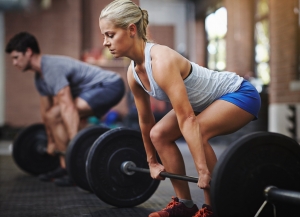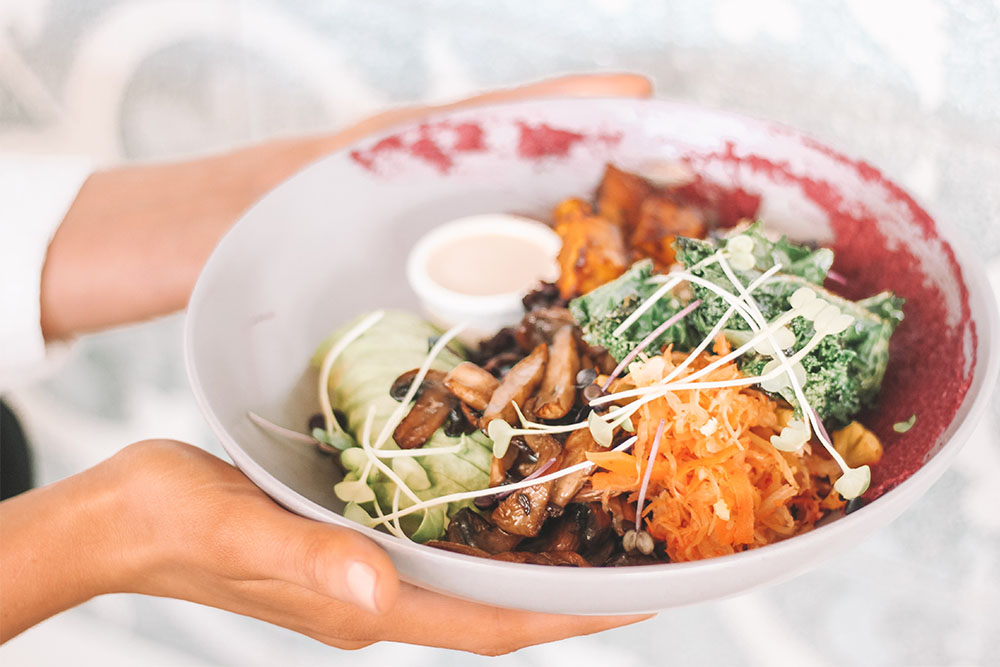How Much Protein Do Women Really Need?

Lauren Rubadeau
How Much Protein Do Women Need Based on their Activity Level?
With New Year’s resolutions in full swing and many looking to improve their health in 2017, I am here today to touch on the significance of protein and just how much of it women need to consume based on their activity level. We hear again and again that women are lacking protein, yet many of us are in confusion about why we might need more, how much we actually need, and how we should incorporate more into our diet.
To start off with the basics, protein is one of the three macronutrients your body needs to function properly, along with fats and carbohydrates. According to the U.S National Library of Medicine, proteins are the building blocks for bones, muscles, cartilage, skin, blood, enzymes, hormones, and vitamins. Every cell in the human body contains protein!
Related Article: Fat, Carbs, Protein and Recovery. Is There A Silver Bullet?
Amino Acids
Chemically, protein is composed of a chain of amino acids. Amino acids are organic compounds made of carbon, hydrogen, nitrogen, oxygen or sulfur. In order for the human body to be healthy and fully functional, it needs all 20 of the varying amino acids (U.S. National Library of Medicine, 2016). These all have unique chemical makeups and are used for different purposes in the human body – but their primary role is to build protein.
Amino acids are classified into three groups: essential, nonessential, and conditional. Essential amino acids cannot be made by the body and must be supplied by food. Instead of storing up a supply of the essential acids, the body uses them to create new proteins on a regular basis. Therefore, it is ideal to provide the body with enough protein intake throughout the course of the day. Nonessential amino acids are made by the body from essential amino acids or by the normal breakdown of proteins. Thus, although they are an important part of building proteins, they do not need to be included in an everyday diet. Finally, conditional amino acids are a component of nonessential amino acids and are particularly needed in times of illness and stress (U.S. National Library of Medicine, 2016).
Why is protein consumption so important?
Recover quickly
No matter your activity level, being able to properly recover from any sort of physical activity is key and protein is the golden ticket to doing so. Protein consumption post-workout ultimately helps your body repair muscle fibers, restore depleted energy and promotes new protein generation in muscles.
Improve immunity
Protect your immune system by first taking a look at your plate. The antibodies that help you fend off infection from bacteria and viruses are actually made of protein. Additionally, foods that are high in protein also tend to be higher in other nutrients that boost your immune system such as magnesium and zinc. Do yourself a favor this flu season and up your protein intake!
Related Article: Get Outside and Exercise – Your Immune System Will Thank You
Burn more calories
Aren’t we all looking for a way to burn more calories? Protein can help! Everything we eat has something called thermic effect of food (TEF), which determines the amount of calories it takes for your body to process and use the nutrients. Proteins have a higher thermic effect than any other type of food at 20-35 percent, which means that your body has to work harder to metabolize protein than other foods, thus burning more calories while doing so (Crovetti et al., 1998).
How much based on activity level?
The U.S. Recommended Dietary Allowance (RDA) for protein is 0.8 grams per kilogram of body weight. To calculate your RDA, you first take your weight in pounds and divide it by 2.2 to figure out your weight in kilograms, then multiply by 0.8 to determine how many grams of protein you need. This approach measures the amount of a nutrient you need to meet your basic nutritional requirements (essentially what you need to prevent from getting sick), not necessarily the amount you should be consuming based on your individual nutrition needs and activity level.
According to a study by the Journal of the International Society of Sports Medicine, this amount of intake may be appropriate for non-exercising individuals, but it is likely not sufficient to offset the oxidation of protein/amino acids during exercise nor is it sufficient to provide substrate for lean tissue accretion or for the repair of exercise induced muscle damage (Campbell et al., 2007).
 Different Quantities
Different Quantities
The study argues that individuals participating in various levels of physical activity require different quantities of protein. I find it significant to note that the results from these studies are applicable to both men and women engaging in physical activity.
Relative to endurance exercise (i.e. long distance running), recommended protein intakes range from of 1.0 g/kg to 1.6 g/kg per day depending on the intensity and duration of the endurance exercise, as well as the training status of the individual. Strength/power exercise (i.e. sprinting, weight lifting) is thought to increase protein requirements even more than endurance exercise, particularly during the initial stages of training and/or sharp increases in volume. Recommendations for strength/power exercise typically range from 1.6 to 2.0 g/kg/day. In addition, research has been done on those engaging in intermittent sports (i.e. soccer, basketball) and found that a protein intake of 1.4–1.7 g/kg was recommended.
Related Article: The Truth About Carbo Loading
Intake Based on Activity Level
What are the best sources?
Before diving into a roundup of high protein sources that you can begin adding to your grocery list, it is important to take into consideration the differences between the two types of proteins: Complete and incomplete.
Complete proteins (CP’s) contain all nine of the essential amino acids that your body needs. These are typically animal-based proteins, but some plant-sources are also considered complete. Examples include meat, fish, eggs, and dairy products. According to the Academy of Nutrition and Dietetics, grains such as quinoa and amaranth are also classified asCP’s due to their makeup of all essential amino acids (Giancoli, 2016).
An incomplete protein contains fewer than all nine essential amino acids. However they can be combined in meals to make a CP. Examples of incomplete proteins include grains, nuts, seeds, black beans, and nut butters. Combinations of foods such as rice and beans or whole-grain toast and peanut butter effectively create a CP.
Related Article: The Importance of Food: How Should I Eat?
To make 2017 your healthiest year yet, kick things off by incorporating a combination of these high protein foods into your diet. Your body will certainly thank you!
Eggs: 6 grams of protein per egg
Non-fat plain Greek Yogurt: 16 grams of protein per 6 oz. serving
Chicken Breast: 23 grams of protein per 3 oz. serving
Pork Tenderloin: 22 grams of protein per 3 oz. serving
Lentils: 18 grams of protein per 1 cup serving
Peanut Butter: 8 grams of protein per 2 tbsp.
Top Sirloin: 23 grams of protein per 3 oz. serving
Cottage Cheese: 14 grams of protein per ½ cup serving
Kashi GOLEAN Cereal: 13 grams of protein per 1 cup serving
Salmon: 29 grams of protein per 4 oz. serving
(Source: USDA National Nutrient Database)
References:
“Protein in Diet.” U.S. National Library of Medicine. Bethesda: A.D.A.M. Inc., 2016. MedlinePlus. Web. 6 Jan 2017.
Crovetti R, Porrini M, Santangelo A, Testolin G. “The influence of thermic effect of food on satiety.” US National Library of Medicine, National Institutes of Health. Eur J Clin Nutr (1998): PubMed. Web. 06 Jan. 2017.
Campbell et al. “International Society of Sports Nutrition position stand: protein and exercise.” Journal of the International Society of Sports Nutrition. (2007): BioMed Central. Web. 06 Jan. 2017.
Giancoli, Andrea. “5 Whole Grains to Keep Your Family Healthy.” ww.eatright.org. Academy of Nutrition and Dietetics, 16 Sept. 2016. Web. 06 Jan. 2017.
USDA Food Composition Databases. United States Department of Agriculture, 2015, https://ndb.nal.usda.gov/ndb/. Accessed 7 Jan 2017.
You Might Like:














